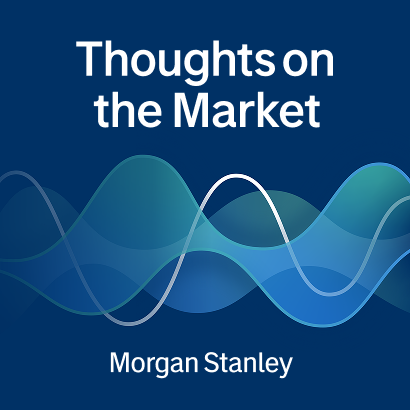Though inflation is still running high, Morgan Stanley Research thinks food prices—up 65% globally in the last two years—will peak this year and begin to drop in 2023. Here’s why.
The effects of rising food prices have rippled through the economy, from governments imposing price controls and trade restrictions to consumers cutting back in other areas as they spend more money on groceries.
In addition to taking a bite out of discretionary spending, increasing food costs have pushed inflation higher and pose a serious risk to global economic recovery. This is especially true in emerging markets, where food represents a large share of overall consumer spending.
The increases are a result of supply constraints driven by difficult-to-predict variables— high energy prices, geopolitics and weather—but analysts with Morgan Stanley Research are forecasting that food prices will peak in 2022 and start falling in 2023.
“While we recognize investor concerns that food prices may escalate further, we believe the market is underappreciating the factors that will cause future food price increases to moderate,” says Morgan Stanley Equity Analyst Roberto Browne.
Among those factors, he notes, are an expected increased output by farmers, weather normalization and the potential for easing of tensions between Russia and Ukraine.
Our work indicates that these food-price increases are likely to be below expectations.
The Pain is Real
Global food prices have surged 65% since the start of the Covid-19 pandemic and by 12% this year alone since the start of the Russian invasion of Ukraine, according to data from the United Nations’ Food and Agriculture Organization. The war has particularly hurt food supply chains, and caused a spike in energy prices, driving fertilizer and shipping costs higher. Add to that recent years of dry weather, and it has been something of a perfect storm for commodity food prices and related products.
Not surprisingly, consumer spending is down and inflation, which largely tracks food costs, is up. “We find that food price shocks impact consumption up to one year following the shock and inflation up to close to eight months,” says Seth Carpenter, Chief Global Economist for Morgan Stanley Research.
6309291362112
When consumers pay more for food, they spend less on other discretionary items, which has serious implications for the global economic recovery. In the U.S., for instance, Morgan Stanley estimates that there is a 1% drop in private consumption a year after a 20% supply-driven increase in food price, with a significant impact to spending on motor vehicles. In emerging markets, the effect of persistent high food prices on overall spending is even more pronounced.
Global food prices are up 65% since the start of the Covid-19 pandemic.
The Other Side of a Peak
All this has led to a consensus view that food prices will continue to increase in the near term. Morgan Stanley, however, thinks the increases will be lower than expected, presenting some relief in 2023 to companies that benefit from lower food-input costs, such as retailers, restaurants and packaged-food companies.
The nature of the variables affecting food prices present a wide range of scenarios. The consensus expectations for food prices above futures contracts for corn, soy and sugar factor in a protracted Russia-Ukraine war, which would further diminish Ukraine’s output, as well as global energy and fertilizer supplies. Meanwhile, an end to the conflict in the near term would allow Ukraine to export grains at closer to historic levels and help normalize trade, energy prices and fertilizer supply, which would bring prices well below agricultural commodities futures.
Morgan Stanley foresees food prices remaining high in 2022, but still below the price of futures, and dropping 11% below forward prices in 2023.
Here’s why:
- Farming margins have been high for several years, buoyed by high grain prices, which have offset hikes in fertilizer costs. This has allowed crop investments and acreage expansion; both should help supply. “Margins are still solid, and even above historical average, and we believe farmers will continue to invest in crops, leading to inventory increases over the next year,” says Browne.
- Without offering a prediction on the timing of conflict’s end, Morgan Stanley expects an increase in supply resulting from easing tensions that would moderate Ukraine’s drop in grain production and damage to infrastructure, combined with no major disruptions to the fertilizer supply chain.
Regardless of where food inflation goes from here, some firms atop the food supply chain will remain more resilient, say Browne: “We would expect some companies, most notably, those involved in providing machinery, seeds and a range of productivity technologies— to be somewhat protected whether food prices go up or start to moderate.”
For more Morgan Stanley Research on the outlook for global eCommerce, ask your Morgan Stanley representative or Financial Advisor for the full reports, “Food Security & Inflation: From Seeds to Stores” (June 13, 2022) and “Rising Food Prices: Macro Implications” (June 6, 2022). Plus more Ideas from Morgan Stanley’s thought leaders.



